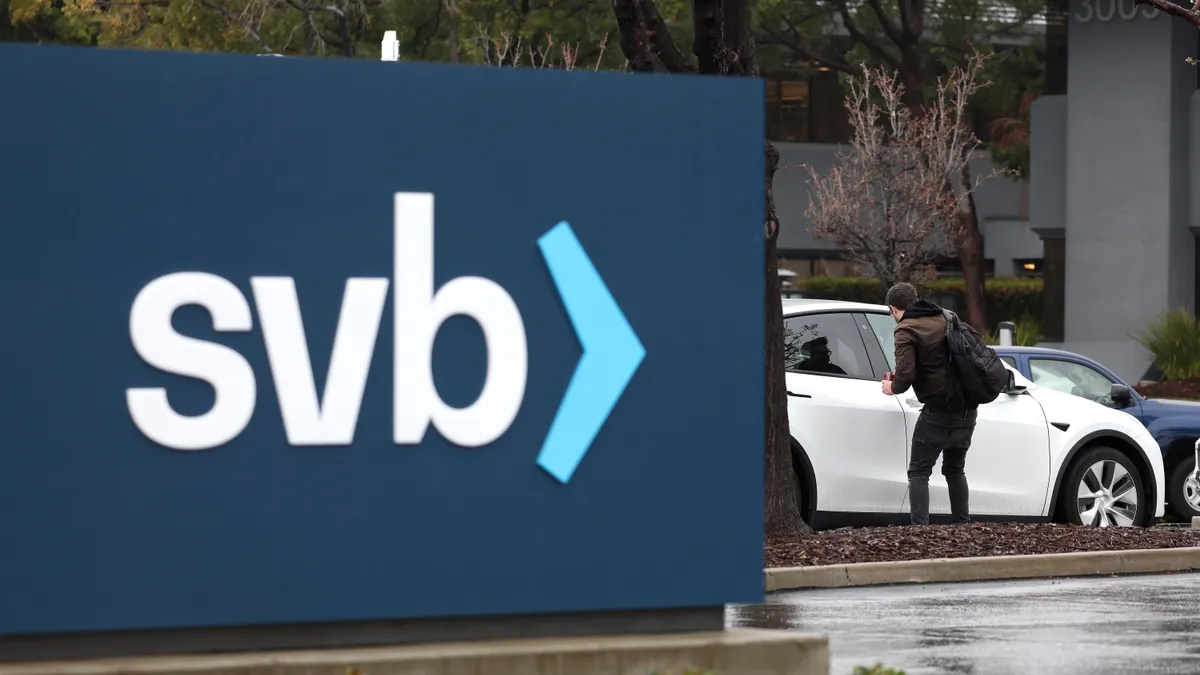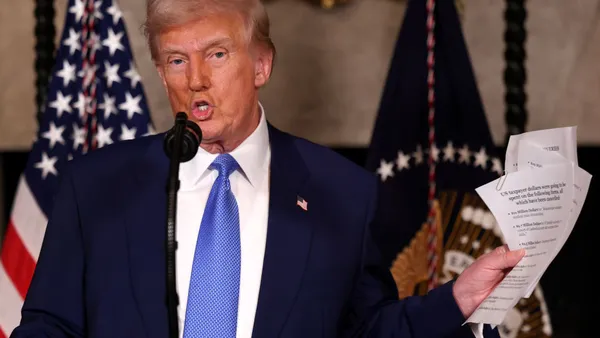Silicon Valley Bank’s former parent, SVB Financial Group, filed for Chapter 11 bankruptcy protection in federal court in New York, the company said in a statement Friday.
The move will allow the company “to preserve value as it evaluates strategic alternatives for its prized businesses and assets” — primarily, venture-capital business SVB Capital and broker-dealer SVB Securities, William Kosturos, SVB Financial Group’s chief restructuring officer, said in the statement.
SVB Financial said it “believes” it has roughly $2.2 billion in liquidity, along with $3.7 billion in outstanding preferred stock. The company also owes bondholders about $3.3 billion, it said.
SVB Financial emphasized that Silicon Valley Bank, which went into Federal Deposit Insurance Corp. receivership March 10, is no longer affiliated with the company.
However, Kosturos said Friday that SVB Financial would “continue to work cooperatively” with the bridge bank.
“We are committed to finding practical solutions to maximize the recoverable value for stakeholders of both entities,” he said.
A coalition of SVB Financial creditors, including Centerbridge Partners, Davidson Kempner Capital Management and fixed-income investment management giant Pimco, formed an investment group this week in anticipation of a bankruptcy filing, and bought the company’s bonds at a steep discount, The Wall Street Journal reported.
The FDIC, however, could tap into proceeds from the sale of the parent company’s assets if the regulator says it needs them to make bridge bank account-holders whole, according to the Journal.
Kosturos, for his part, is no stranger to shepherding finance operations in a crisis. He served as the go-to person to manage the restructuring of Washington Mutual Bank in 2008, Legal Dive reported. WaMu ranks as the only U.S. bank larger than SVB to fail.
Silicon Valley Bank’s spiral began last week, when it was forced to sell a portfolio of treasuries and mortgage-backed securities to Goldman Sachs at a $1.8 billion loss. To make up for it, the bank tried to raise $2.25 billion in common equity and preferred convertible stock. Skittish account-holders, however, withdrew $42 billion in one day — roughly a quarter of the bank’s deposits.
Next steps
Meanwhile, the FDIC could gear up to try and auction off Silicon Valley Bank a second time. Regulators’ attempt to find a buyer last weekend for the seized bank sputtered amid a lack of interest in bidding for the whole unit, as well as some infighting among agencies, according to Bloomberg.
The FDIC’s rules dictate that it finds the least costly outcome for the agency. That would have meant letting the bank fail and paying just the insured losses. But the lion’s share of Silicon Valley Bank’s deposits were held by companies with well over the FDIC’s $250,000 insurance limit. So little more than 10% of deposits would have been paid out.
The only way around that, argued FDIC Chair Martin Gruenberg, was for the government to say Silicon Valley Bank presented a systemic risk to the U.S. economy, according to Bloomberg. That would mean the FDIC could pay out uninsured losses, and banks that pay into the Deposit Insurance Fund would cover the rest.
JPMorgan Chase and PNC were reportedly in talks to buy Silicon Valley Bank. PNC decided against it, Bloomberg reported. For JPMorgan, such a purchase would risk giving the bank more than 10% of all U.S. deposits, in violation of current rules. And regulators may have been loath to make an exception.
Aside from that, JPMorgan may have found itself less than enthused at taking on another failed bank, after picking up Bear Stearns and WaMu during the financial crisis of the late 2000s.
“We would not do something like Bear Stearns again — in fact, I don’t think our board would let me take the call,” JPMorgan CEO Jamie Dimon told shareholders in 2015. “These are expensive lessons that I will not forget.”
Bidders thus far appear most interested in pieces of Silicon Valley Bank’s business rather than the whole, Bloomberg reported. Private-equity firms apparently are eyeing a loan book worth $74 billion. Silicon Valley Bank executives, meanwhile, are looking to revamp a wine-lending portfolio in preparation for a potential sale.
Still, some potential bidders may be waiting for the asking price to drop.
“When you do another [auction], it’s like when you’re listing a house for a second time — you lower the price,” Tim Yeager, a professor at the University of Arkansas and former St. Louis Fed economist, told Bloomberg.












